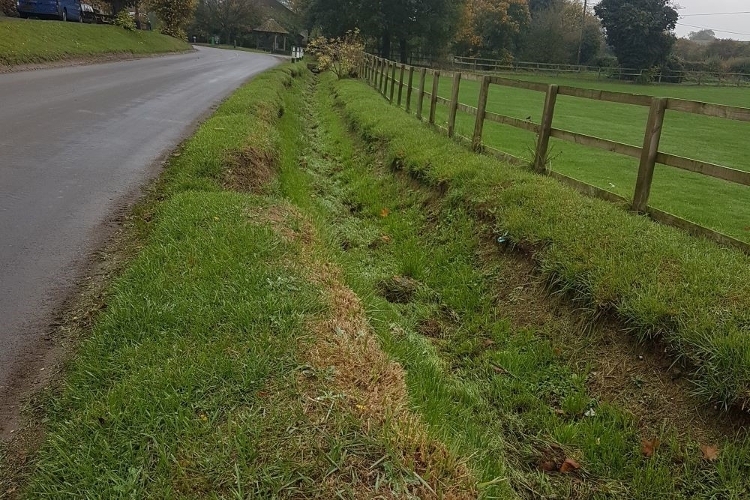Land drainage and ordinary watercourses
Our flood risk and drainage pages are currently under development. This means we may be making further changes to the information on the pages below in the future.

Land drainage is a term used to describe the process of managing rainfall, surface water and saturated land to prevent flooding and waterlogging. It is commonly applied in reference to the use of watercourses, lakes/ponds and drainage infrastructure to drain parcels of land.
Land drainage law is complex and is formed from a combination of the Land Drainage Act 1991 and common law assumptions.
One of the core principles of land drainage is that a landowner is responsible for the drainage of their land and, in so doing, they should not cause problems for their neighbours. A person owning land at a lower elevation to a neighbouring property must accept natural land drainage water (that is, spring water, ground water or surface water run-off) from adjacent land at a higher elevation. Run-off refers to water that flows overland prior to discharging into the ground, a drain, or watercourse.
Run-off from natural land drainage does not include water that may result from development or modification of that land, such as water from gutters and downpipes.
Even run-off from permeable landscapes, such as agricultural land, can be considered a nuisance if there is evidence of poor land management and/or neglect of land drainage features (see challenges and expectations below).
Watercourse is the collective term for both ordinary watercourses and main rivers. An ordinary watercourse is a river, stream, brook, ditch, drainage channel, culvert, or any other channel through which water may flow which is not designated as a main river.
The Environment Agency designates main rivers in England.
For information regarding main river designation please see the 'Main river map for England: proposed changes and decisions' on GOV.UK and 'Designation of 'main rivers': guidance to the Environment Agency' on GOV.UK.
If your property/land is adjacent to a main river and you wish to carry out works, please follow Environment Agency advice and consider whether you need permission. You can 'check if you need permission to do work on a river, flood defence or sea defence' on GOV.UK.
An ordinary watercourse does not have to be recorded on a map to be an ordinary watercourse. Given the nature of ordinary watercourses, they are frequently left unmapped which can present challenges, especially when considering maintenance and ownership responsibilities, or where the ordinary watercourse has been modified.
All watercourses are subject to riparian ownership rules. A private landowner is considered by law to be a 'riparian owner' if you own land which:
- is located next to a watercourse, or
- has a watercourse running through or underneath it
If the land on the other side of the watercourse does not belong to you, you're presumed to be a joint riparian owner, together with the landowner on the opposite side of the watercourse.
For more details regarding riparian ownership please see our responsibilities for ditches and riparian owners page.
Lead local flood authorities have consenting and enforcement powers for ordinary watercourses. The Lead Local Flood Authority (LLFA) can carry out flood risk management work on ordinary watercourses in their area. If you wish to alter a watercourse in any way, please consider whether you need to apply for Ordinary Watercourse Consent.
Challenges and expectations
West Berkshire is a complex region with underlying ground conditions that make providing adequate land drainage challenging for landowners. High groundwater levels in the Lambourn and Pang Valley can result in much of the region becoming saturated and at risk of flooding following periods of prolonged rainfall or major storms.
Despite this we do have expectations of landowners to ensure they are doing what they can to reduce the risk of flooding to the wider area:
- we expect landowners to maintain and manage any ordinary watercourses for which they have riparian ownership
- we expect landowners to take responsibility for failure to manage surface water runoff from their land
Agricultural land can pose significant risk to the highway drainage networks and neighbouring properties due to poor land management and where land drainage measures are not provided or are neglected.
The highway drainage networks are vulnerable to blockages caused by excessive silt/sediment in runoff from adjacent land.
When notified, landowners should take action to ensure that they are not responsible for causing a nuisance within the highway.
The Agriculture and Horticulture Development Board (AHDB) has produced a useful guide to field drainage.
- we expect landowners to take immediate action to remedy any works to watercourses which increase flood risk
- we will always try to work with landowners to resolve issues before pursuing actions/executing powers under the Highways Act 1980, Land Drainage Act 1991, or Flood and Water Management Act 2010




